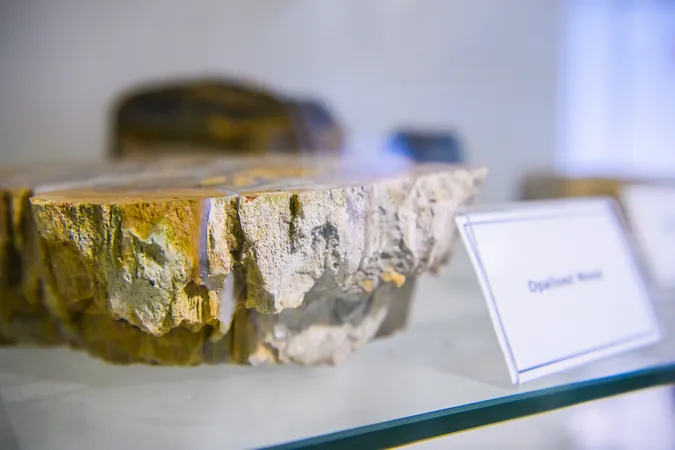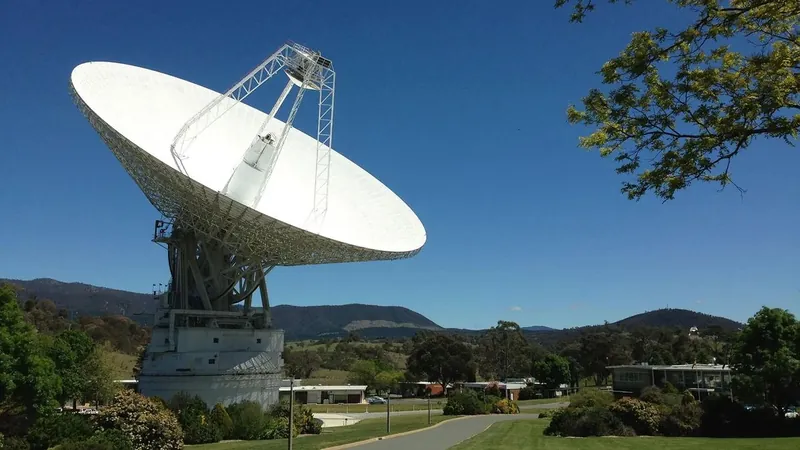
Groundbreaking Discovery of Earth's First Crust Composition Challenges Longheld Geological Beliefs!
2025-04-02
Author: Li
Groundbreaking Discovery of Earth's First Crust Composition Challenges Longheld Geological Beliefs!
In a stunning revelation that sends shockwaves through the geological community, researchers have unveiled findings that dramatically reshape our understanding of Earth's formative years. A new study, published in the prestigious journal Nature, indicates that the planet's first crust, believed to have formed around 4.5 billion years ago, exhibited chemical characteristics strikingly similar to today's continental crust. This groundbreaking discovery suggests that the fundamental chemical signatures we observe in modern continents were established almost at the dawn of Earth's history.
Led by Professor Emeritus Simon Turner from Macquarie University, the research involved collaboration from geological experts across Australia, the UK, and France. Professor Turner emphasized the profound implications of the study, stating, "This discovery has major implications for how we think about Earth's earliest history."
For decades, scientists have debated when plate tectonics began, as this phenomenon is essential for understanding Earth's geological evolution and the emergence of life. Previously, it was believed that the distinctive low-Niobium signature present in rocks formed in subduction zones could only arise through the process of tectonic plates interacting with one another. However, inconsistencies in research results prompted Professor Turner to challenge this assumption, asking whether researchers were perhaps looking at the problem incorrectly.
To unravel the mystery, the team employed advanced mathematical models simulating the conditions of early Earth when our planet's core was forming, and a molten ocean of magma enveloped its surface. Remarkably, their models indicated that the first crust, known as the protocrust, could naturally develop the same chemical signatures found in modern continents, without the need to invoke plate tectonics as a factor.
The key to this finding lies in the behavior of niobium under the reducing conditions of early Earth. Professor Turner noted a crucial connection between the formation of Earth's core and the negative niobium anomaly observed in continental crusts. This chemical anomaly helped solve the age-old mystery of why this distinctive signature appears in almost all continental rocks, irrespective of their age—a game-changer for geological timelines.
As Earth evolved, the initial crust underwent significant transformations due to a barrage of meteorite impacts, which reshaped the crust and enriched it in silica. Over time, fragments of the original crust thickened in certain regions, laying the groundwork for what would eventually become the continents. The dynamics of these segments as they shifted also created new crustal materials akin to those present on today's ocean floors.
Moreover, the heavy meteoric bombardment experienced during this era played a critical role in recycling and disrupting crust formation, pushing the processes of plate tectonics to operate sporadically until around 3.8 billion years ago. At this point, as the solar system settled into more stable orbits, plate tectonics transitioned into a steady and self-sustaining rhythm.
Professor Turner concluded, "This landmark study not only reshapes our understanding of Earth's oldest geological processes, but it also offers new insights into how rocky planets across the universe might develop their own continents." As we advance our knowledge of Earth’s history, this astonishing discovery may hold the keys to unraveling the geological mysteries of other celestial bodies.
Stay tuned, as we continue to explore how these revolutionary findings will influence future research and our quest to understand the cosmos!




 Brasil (PT)
Brasil (PT)
 Canada (EN)
Canada (EN)
 Chile (ES)
Chile (ES)
 Česko (CS)
Česko (CS)
 대한민국 (KO)
대한민국 (KO)
 España (ES)
España (ES)
 France (FR)
France (FR)
 Hong Kong (EN)
Hong Kong (EN)
 Italia (IT)
Italia (IT)
 日本 (JA)
日本 (JA)
 Magyarország (HU)
Magyarország (HU)
 Norge (NO)
Norge (NO)
 Polska (PL)
Polska (PL)
 Schweiz (DE)
Schweiz (DE)
 Singapore (EN)
Singapore (EN)
 Sverige (SV)
Sverige (SV)
 Suomi (FI)
Suomi (FI)
 Türkiye (TR)
Türkiye (TR)
 الإمارات العربية المتحدة (AR)
الإمارات العربية المتحدة (AR)